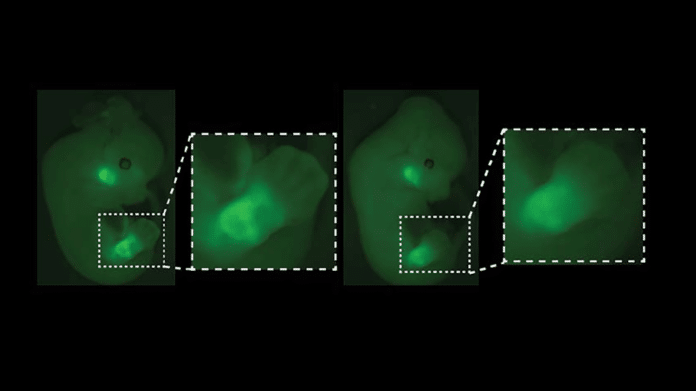During embryonic development, several genes work together according to a very meticulous scheme and tempo. Short DNA sequences monitor this genetic activity- by binding specific proteins in the cell nucleus, they act as accurate ON/OFF switches.
When this switch is ON, it starts the transcription of a gene into RNA, which is then translated into a protein that can perform a specific task. Without this, genes would be continuously switched on or off, therefore unable to act selectively, in the right place, and at the right time.
Failure of this mechanism, sometimes lead to more or less disabling malformations, suggests a new study by the University of Geneva, Switzerland.
Scientists wanted to determine if the loss of one of these switches has consequences. For the study, they studied the Pitx1 gene, one of the genes involved in constructing the lower limbs. Even a small disturbance in the activation process of this gene at the origin of clubfoot can lead to common foot malformation, found scientists.
Scientists modified mouse stem cells using CRISPR-CAS 9. They removed Pitx1’s switches, called Pen, and added a fluorescence marker to visualize the gene activation.
Olimpia Bompadre, a doctoral student in the research team and co-first author, said, “These modified cells are then aggregated with mouse embryonic cells for us to study their early stages of development.”
Guillaume Andrey, professor in the Department of Genetics and Developmental Medicine at the UNIGE Faculty of Medicine, said, “Usually, about 90% of cells in future legs activate the Pitx1 gene, while 10% of cells do not. However, when we removed the Pen switch, we found that the proportion of cells that did not activate Pitx1 rose from 10 to 20%, which was enough to modify the construction of the musculoskeletal system and to induce a clubfoot.”
“Indeed, the proportion of inactive cells increased particularly in the immature cells of the lower limbs and in the irregular connective tissue, a tissue that is essential for building the musculoskeletal system.”
Beyond the Pitx1 gene and clubfoot, scientists found a general principle whose mechanism could be found in a large number of genes. Flawed genetic switches could thus be at the origin of numerous malformations or developmental diseases.
Moreover, a gene does not control the development of a single organ in the body but is usually involved in constructing a wide range of organs.
Scientists noted, “A non-lethal malformation, such as clubfoot, for example, could be an indicator of disorders elsewhere in the body that, while not immediately visible, could be much more dangerous. Suppose we can accurately interpret the action of each mutation. In that case, we could not only read the information in the genome to find the root cause of a malformation but also predict effects in other organs, which would silently develop, to intervene as early as possible.”
Journal Reference:
- Rouco, R., Bompadre, O., Rauseo, A. et al. Cell-specific alterations in Pitx1 regulatory landscape activation caused by the loss of a single enhancer. Nat Commun 12, 7235 (2021). DOI: 10.1038/s41467-021-27492-1
